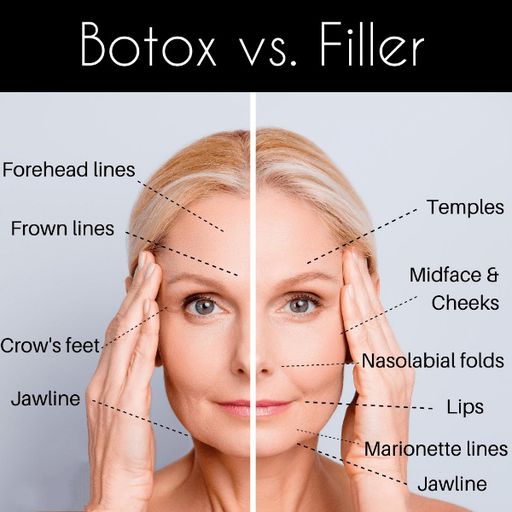The popularity of injectables has been on a rise for over a decade. While Botox is still on top of the list, dermal fillers are quickly encroaching on that spot.
You may already know the basics about these two injectables but if you don't get the difference, we're here to get into the nitty-gritty details about each of these injectables, including the pain factor, which lasts longer and most importantly where to get what.
What is Botulinum Toxin?
Botulinum toxin works by temporarily weakening or paralyzing the muscles. It is used to treat dynamic wrinkles, which are wrinkles and lines seen when one animates their face.
What are Fillers?
Fillers are injectable gels that function to add volume in the areas of the skin that have sunken in to restore lost volume and enhanced facial contour.
How and When to opt for Botulinum toxin (Botox) vs Fillers
The effectiveness of either procedure depends on what you need. Botox, for instance, can be used preventatively, even before you're noticing any deep-set wrinkles.
Botox is a great choice for hitting those “crease points” where muscles contract, fillers are best for deep lines that are present even when facial muscles are not contracting.
Possible side effects
Bruising or swelling at the injection site
Redness and irritation
A bluish cast to the skin (specifically from fillers)
Droopy eyelids (from botulinum toxin)
Numbness, Sores, Scarring (from fillers)
Which lasts longer: Botox or Fillers Final Takeaway
Hyaluronic acid fillers, which come in a variety of thicknesses so that the right one can be chosen for each particular skin type, last 5-24 months. Botulinum toxin can last around 3-6 months.
Final Takeaway
Dermal fillers might produce more long-term results, but these injections also carry more side
effects than Botulinum toxin injections. Keep in mind that botulinum toxin and dermal fillers treat slightly different problems and are usually used in different areas of the face. They may also be used in conjunction as complementary treatments to achieve your desired results. Weigh all your options carefully with your healthcare provider.
